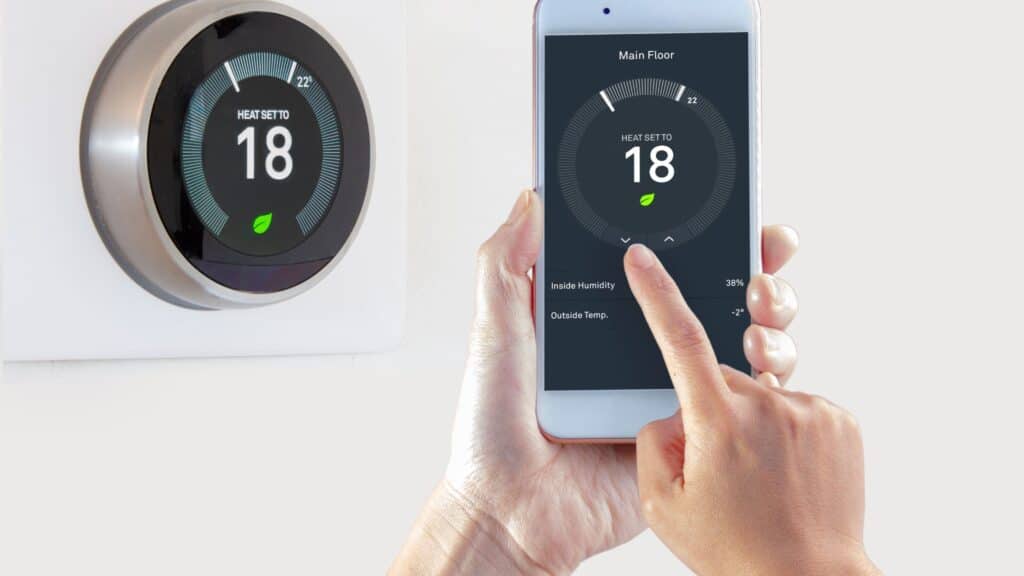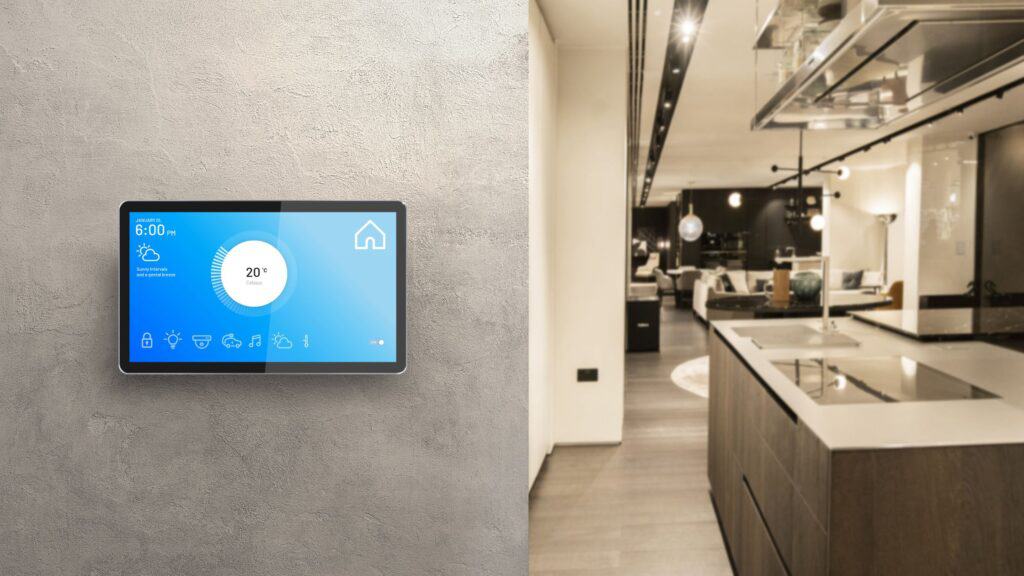Here is a detailed smart thermostat guide that outlines how it works and its various uses in a household.
What Are Smart Thermostats?
These are special devices that are attached to heating or cooling systems. They are used to regulate indoor temperature with manual interference.
They help regulate the temperature automatically. By regulating the temperature they also ensure that excess electricity is not consumed.
A lot of these smart thermostats can be linked to wifi and controlled via cell phones. This allows users to even control the device remotely.
Smart Thermostat Facts – How Do Smart Thermostats work?
Thermostats have internal metallic strips that are used to regulate the temperatures. The contraction and expansion of these strips are used to switch the thermostat on and off. These strips are used to carry electricity through the circuit they are embedded in. The strips complete the circuit when they are in their normal state.
When the strips heat up, they expand. The expansion causes the circuit to break. Once the circuit breaks, the heating is switched off and as a result, the room is cooled down.
You can adjust the temperature at which the strip should expand and break the circuit. The metal strips do not expand or contract instantly – the contraction and expansion is a gradual process.
If you are looking for a thermostat that reacts instantly to temperature changes, you can opt for a thermostat that has gas-filled bellows, positioned between metal discs. These discs are designed in such a way that they have a large surface area, which in turn allows the strips to react quickly to changes in heat. There is gas in the bellows which contracts and expands and therefore controls the electric circuit and subsequently the heating.
Do Smart Thermostats Require Wifi?

The smart thermostat works on the same principle as a conventional thermostat. The only difference is that it can be programmed to automatically regulate the temperature of the environments it is placed in. Since these thermostats run on wifi, they can be remotely controlled even when the users are not in the house.
These smart thermostats can also be preprogrammed to heat or cool a place. This allows you to start heating or cooling before you come back home. As a result, the house’s temperature will be optimum when you reach home. This is very useful when you have babies, you can make sure the house is neither too warm nor too cold.
Smart Thermostat Uses
So how are smart thermostats integrated into the household system?
Smart thermostats come with a variety of perks. For example, some models can be integrated with smart virtual assistants like Alexa. This allows you to control the thermostats with your verbal commands. You can ask the virtual assistant to switch your thermostat on or off.
Some smart thermostats can be integrated with sensors. You can preprogram the thermostats to start working when they sense someone’s presence.
Some of these automatic thermostats are also integrated with a geolocation system (GPS). They are programmed to detect when the users leave the home or when they are about to approach it. The thermostats can be switched off automatically when the user leaves the house. This way users do not have to worry about switching off the thermostat.
Can Smart Thermostats Save You Money?
Some of these smart thermostats are digitally programmed to learn from our habits. Over time they adapt and regulate temperatures without having to program them continuously. By regulating temperatures, they also help to optimize electricity consumption and save users money in the long run.
Wireless Smart Thermostat – Do Smart Thermostats Need Special Wiring?
This choice largely depends on the kind of smart thermostat that would work best with your heating system.
Wireless smart thermostats allow greater flexibility and provide the advantage of controlling the thermostat remotely. Wireless smart thermostats are battery-operated and most of them come with a digital screen from where thermostat settings can be adjusted.
Wired smart thermostats have to be connected to a power supply using cords. They are also connected to the boiler using a wired mechanism.
How To Install And Maintain Smart Thermostats

Smart thermostats come with detailed instructions on how to install them efficiently. Apart from brochures, you can even go online and search for videos on how to install these thermostats. If at any point you feel overwhelmed, you can always seek a professional’s help.
Thermostats need to be installed in places where the device has access to fresh air flowing in so it can sense the correct temperature. Do not place it in areas where the sunlight is concentrated or behind curtains – the thermostats will not sense the temperature correctly.
How Smart Thermostats Save Energy
For optimum electricity consumption, set the thermostat’s temperature between 18 and 21 degree Celsius.
There is a widespread misconception that we need to increase the temperature on colder days. This needs to be beaten to the curb.
The purpose of the thermostat is to regulate the temperature. The automatic thermostat can be programmed to switch on sooner at higher temperatures. This is also an excellent way to reduce electricity bills. A lot of electrical energy is required to warm up houses quickly, so you can set the thermostat at a temperature where the electricity consumption will be lower.
The automatic thermostat can sometimes malfunction if it is buried under dust and dirt. This accumulation can cause it to misread temperatures and also lose its connection with the heating and cooling systems. You will have to clean it regularly with a soft brush or compressed air.
Most smart thermostats tend to give off signals when they require a change of batteries. Make sure you change the batteries immediately so that the HVAC system does not run unchecked.
Test your thermostat’s thermometer at least once every year. This is a crucial step – if the thermometer is not able to read the temperature properly, it will be unable to regulate and control temperatures.
